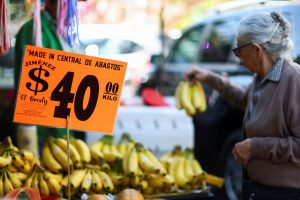The economy of the Lao People's Democratic Republic (Lao PDR) is expected to grow moderately this year and next, thanks to external demand linked to tourism and trade, according to a new report from the Asian Development Bank (ADB).
ADB's flagship publication Asian Development Outlook (ADO) April 2024 forecasts gross domestic product (GDP) to grow by 4% in both 2024 and 2025. External demand will support growth in services, with an expected increase in international tourist arrivals to 4.2 million in 2024 thanks to improved infrastructure connectivity.
Foreign investment in renewable energy will help drive moderate industrial growth, such as the development of the Monsoon wind energy project, scheduled for completion in 2025. However, macroeconomic pressures will continue to weigh on growth prospects.
“The economy continued its moderate recovery in 2023, supported by services, particularly tourism and trade,” said ADB Lao PDR director Sonomi Tanaka. “However, the pressure of unsustainable debt and high inflation have persisted, slowing the overall pace of the country's economic recovery.”
Xanh SM Laos launches electric taxi service in Champasak
Inflationary pressures are expected to continue in the country as companies raise prices to cover higher costs due to falling currency values and wage increases. Consumer prices are forecast to rise by an average of 20% in 2024, before moderating to 7% in 2025. This comes after consumer prices rose by 23% in 2022 and 31.2% in 2023. Prices of food, hotels and restaurants have risen faster than salaries, which has caused a decrease in household purchasing power.
The decline in household purchasing power has serious implications for the future of Lao PDR's economy, with more students dropping out of school and increased labor migration as more people move in search of work.
Lao PDR's economic and financial problems – particularly high public debt, sharp currency depreciation and high inflation – contribute to the persistence of food and nutrition problems. High food inflation is especially worrying, averaging 39.5% in 2023.
One in seven people in the country will be food insecure by 2023, and people in rural areas will be twice as likely as those in urban areas to experience shortages. Food insecurity and poor nutrition have a high cost, including stunting due to malnutrition, which can reduce a child's productivity throughout their life.
The economy continued its moderate recovery in 2023, supported by services, particularly tourism and trade
Inflationary pressures in the country are expected to continue as companies raise prices to cover higher costs due to the fall in the value of the euro.
The government has acted to ease household strain by working with development partners to expand social assistance, improve health services, and invest in clean water and sanitation. Looking ahead, it will be crucial to develop long-term sustainable financing mechanisms to address the multidimensional nature of food security amid macroeconomic instability. This involves reforms to overcome economic and financial challenges and further improvements in social assistance that are nutrition-sensitive and climate-resilient.
ADB is committed to achieving a prosperous, inclusive, resilient and sustainable Asia and the Pacific, while maintaining its efforts to eradicate extreme poverty. Created in 1966, it belongs to 68 members-49 from the region.



![[Img #74675]](https://thelatestnews.world/wp-content/uploads/2024/12/They-discover-a-new-class-of-X-ray-sources-in-the-150x150.jpg)










